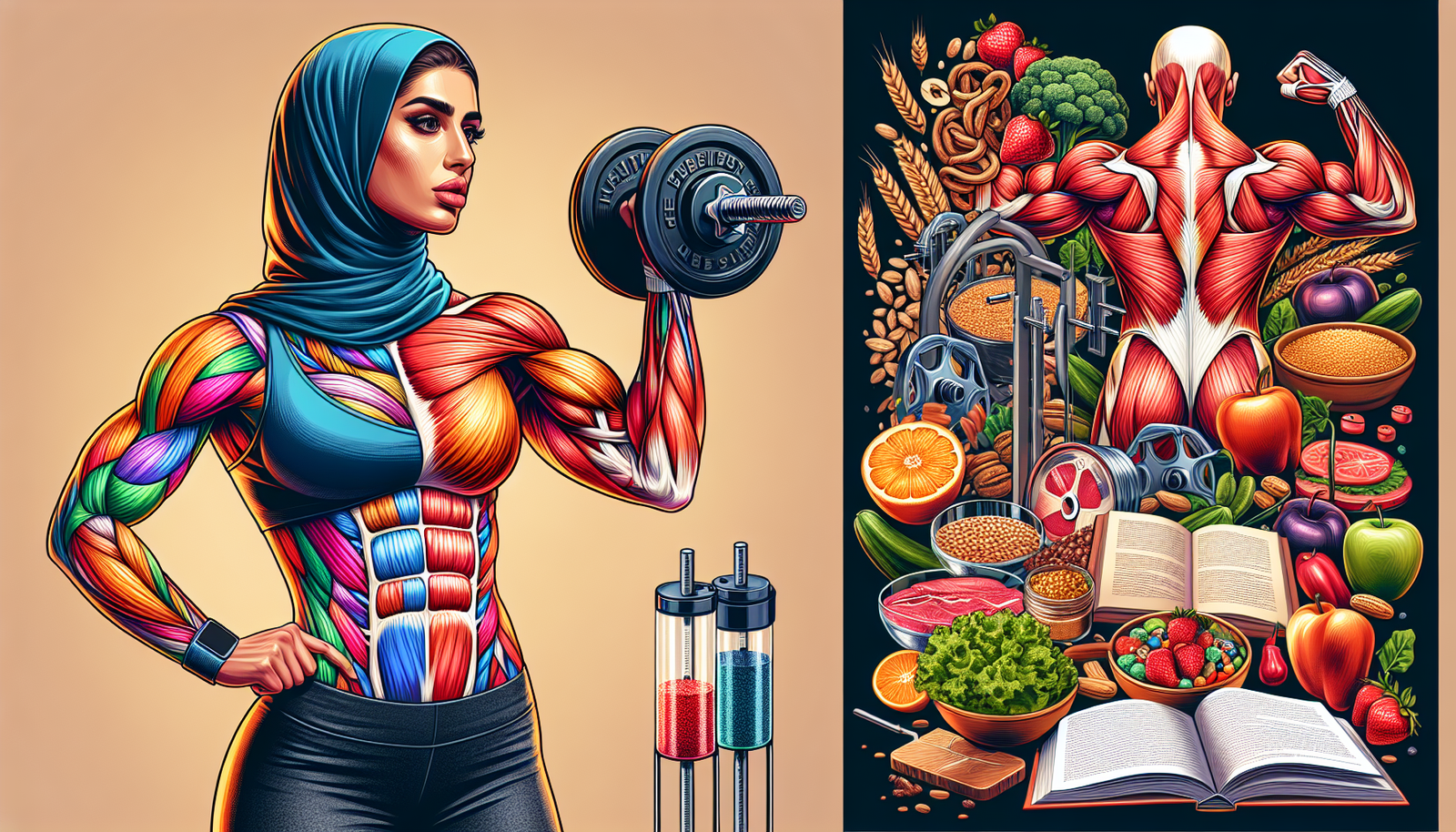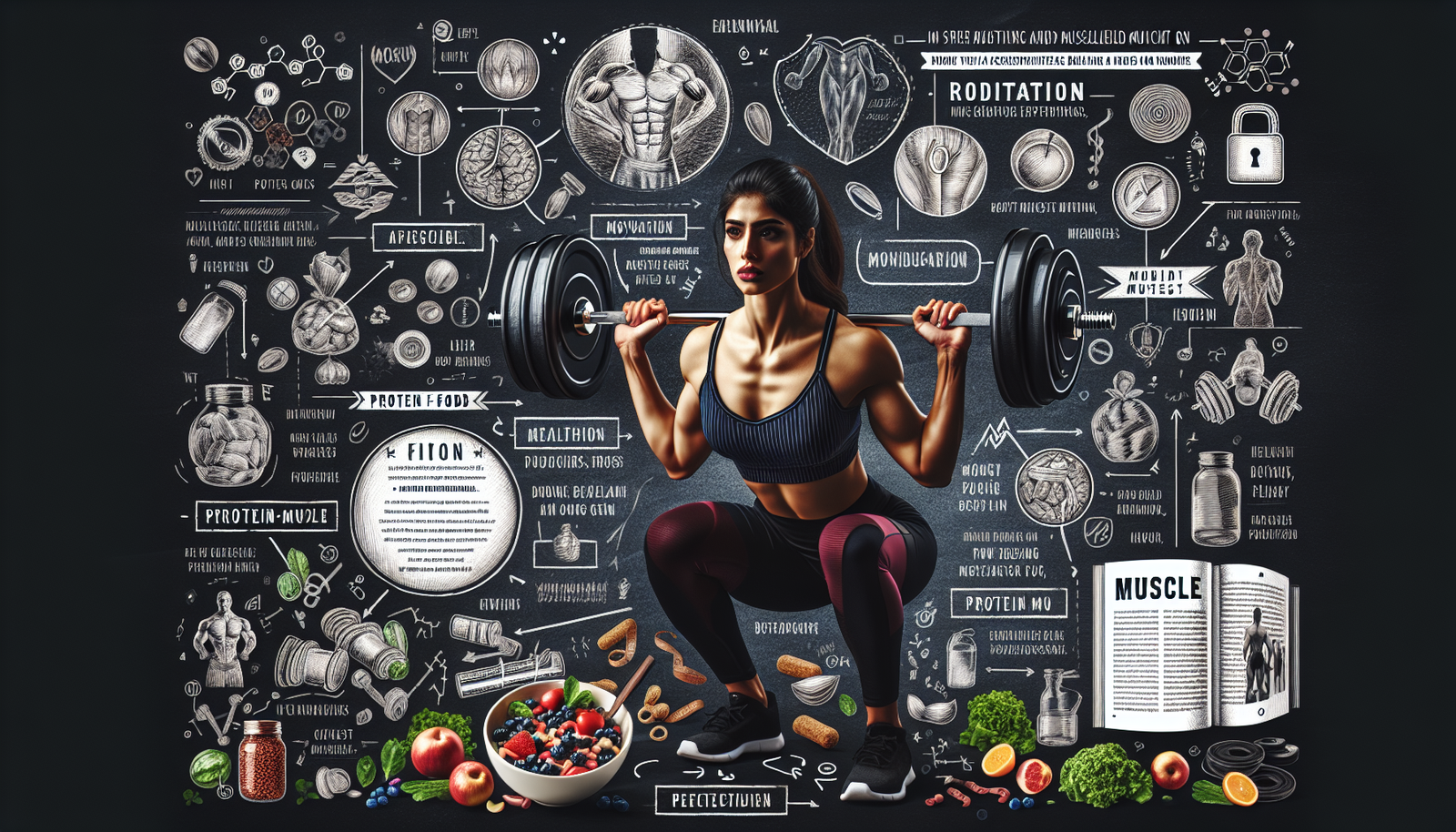Ultimate Guide: How to Build Muscle for Women
Ever felt underwhelmed by the lack of coherent, specific guides dedicated to help women build muscle? Your search ends here with this ultimate guide designed specifically for you. Pack on lean muscle and sculpt your perfect physique by learning the essential muscle-building strategies established in this guide. From the science behind muscle growth, to expert workout routines and nutrition plans, this comprehensive guide goes beyond usual advice, providing you with hard facts and practical steps to help you on your journey. Get ready, because you’re about to embark on a transformative journey that’s going to change your fitness game forever.
Understanding the Basics of Muscle Building
Building muscles is not just about pumping iron at the gym. You have to understand the basics of muscle building, such as the role of muscles in your body, how they grow, and the differences in muscle development between men and women.
The role of muscles in the body
Muscles are integral parts of your body. They perform numerous functions such as maintaining posture, producing heat, and enabling movement. Having strong muscles improves your overall health, minimizes the risk of injury, and enhances your quality of life.
How muscles grow
Muscle growth, also known as muscle hypertrophy, happens when muscle fibers are damaged or injured through workouts or strenuous activities. Your body repairs these damaged fibers by fusing them, which increases their size. This repairing process happens mostly when you’re resting, so proper rest is crucial for muscle growth.
The differences in muscle development between men and women
Men and women can both build muscle, but due to hormonal differences, the process and results differ. Women have less testosterone – a hormone that promotes muscle growth – so their muscle development rate is comparatively slower than men. However, the ability to gain muscle definition and strength is still possible for women.
Nutrition for Muscle Building
What we eat plays a vital role in muscle building. The right nutrition aids in muscle tissue repair and impacts your overall fitness levels.
The importance of protein
Protein is perhaps the most critical nutrient for muscle building. During workouts, muscle fibers experience damage, and protein plays an essential role in repairing these fibers, triggering muscle growth.
Balanced diet requirements
Apart from protein, a balanced diet including carbohydrates, healthy fats, vitamins, and minerals is essential for muscle building. Carbohydrates are your body’s primary energy source, fueling your workouts, while healthy fats play a crucial role in hormone production, including growth hormones required for muscle recovery and growth.
Food timing around workouts
When and what you eat around workouts is important. Pre-workout meals should include a balanced combo of carbs and protein for sustained energy. Post-workout meals should be protein-rich to aid in muscle recovery and growth.
Hydration importance
Being adequately hydrated is necessary for optimal physical performance. Dehydration can lead to decreased strength, muscle cramps, and fatigue, hindering your training progress.

The Role of Supplements
Diet alone may not provide all the nutrients required for efficient muscle building, hence the role of supplements.
Protein powders and their uses
Protein powders can be a great addition to your diet, especially if you struggle to meet your daily protein needs. They support muscle recovery and growth and can be conveniently consumed, post-workout or as a snack.
Vitamin and mineral supplements
Certain vitamins and minerals, like Vitamin D, magnesium, and calcium are critical for bone health and muscular functionality. If your diet lacks these, supplements can fill the gap.
Branched Chain Amino Acids (BCAAs)
BCAAs are essential amino acids that play a crucial role in muscle recovery and growth. They can be particularly beneficial if you’re doing intense workouts.
Pre-workout and post-workout supplements
Pre-workout supplements can fuel your workouts, while post-workout supplements support recovery. Common ingredients include caffeine (for focus and energy) and creatine (for enhanced performance and muscle gain).
Types of Exercises to Build Muscle
The type of exercise you engage in plays a huge role in the kind of muscle growth you’ll experience.
Weight lifting
Weight lifting is one of the best ways to stimulate muscle growth. It causes muscle damage that triggers the body’s repair process, leading to muscle hypertrophy.
Bodyweight exercises
Bodyweight exercises are convenient and target multiple muscle groups. Push-ups, squats, lunges, and pull-ups are excellent examples of bodyweight exercises.
High-intensity interval training (HIIT)
HIIT combines bursts of high-intensity exercise with short rest periods. It not only burns fat but also contributes significantly to muscle building.
Cardio workout role
Cardio exercises, such as running or biking, are essential for overall fitness. Though not as efficient for muscle building as strength training, they still contribute by improving muscular endurance and promoting fat loss.

Workout Routines for Muscle Building
to build muscle effectively, strategic workout routines are necessary.
Creating a workout plan
A structured workout plan will keep you on track, maintain consistency, and ensure you’re catering to all muscle groups evenly.
Dividing workouts by muscle groups
To prevent overtraining and promote balanced muscle growth, divide your workouts by muscle groups. For instance, training legs one day, chest and back the next, and so on.
Frequency, Intensity, Time, and Type (FITT) principle
The FITT principle is a useful guideline for structuring a fitness program. Frequency refers to how often you exercise, Intensity refers to how hard you work during an exercise session, Time refers to how long you exercise, and Type refers to the type of exercise you do.
Understanding Rest and Recovery
Rest and recovery are a crucial part of muscle building that’s often overlooked.
The importance of rest days in building muscle
Rest days are essential as they allow your muscles to repair and grow. Training without adequate rest can lead to overtraining and hinder your progress.
Techniques for muscle recovery
Massage, heat therapy and cold therapy are techniques that aid in muscle recovery.
Sleep and muscle growth
Sleep plays a key role in muscle recovery. It’s during sleep that the body produces growth hormone, which aids in tissue repair and muscle growth.

Avoiding and Dealing with Injuries
Workout injuries can be a hindrance to your muscle-building journey. But with precautions, they can be avoided.
Common workout injuries
Workout injuries often occur due to inadequate form, lack of warm-up, or overtraining. Common ones include sprains, strains, and fractures.
How to prevent injuries
Injury prevention involves adopting proper form during exercises, incorporating adequate warm-up and cool down sessions, maintaining a balanced workout routine, and listening to your body’s signals.
Dealing with injuries when they occur
If you do face an injury, it’s best to immediately rest and not push through the pain. Consult a healthcare professional for accurate diagnosis and rehabilitation.
The Role of Hormones in Muscle Building
Hormones significantly influence muscle growth.
Testosterone vs estrogen in muscle building
Testosterone promotes muscle growth, while estrogen aids in muscle recovery. Men’s higher testosterone levels favor muscle development more than women’s generally higher estrogen levels.
How menstrual cycle impacts muscle growth
During certain stages of the menstrual cycle, there can be hormonal changes affecting strength, energy levels, and recovery, which could potentially impact muscle growth.
Menopause and muscle growth
Menopause often leads to muscle loss due to a decline in estrogen levels. However, strength training can counteract this effect, promoting muscle growth.

Mental Approach to Muscle Building
Mental health is as crucial as physical health in your muscle-building journey.
The role of mental health in training
Mental health affects your motivation to exercise, your consistency, and your overall performance. It’s essential to ensure a positive mental state for successful training.
Overcoming workout anxiety
Workout anxiety can be a barrier to your progress. To overcome it, start slow, focus on the process rather than the end results and remember everyone was once a beginner.
Setting achievable goals
Setting realistic and achievable goals keeps you motivated, aids in measuring progress, and prevents overtraining.
Frequently Asked Questions
How long does it take to build muscle?
Building muscle takes time and consistency. On average, an individual can gain 1-2 pounds of muscle per month with regular training and a proper diet.
Can women get bulky from lifting weights?
Women don’t naturally get bulky from lifting weights due to their lower testosterone levels. Strength training would rather help them gain strength and defined muscles.
How to balance cardio with strength training?
To balance cardio with strength training, you could alternate cardio and strength training days or do short bursts of cardio in between strength training exercises.


